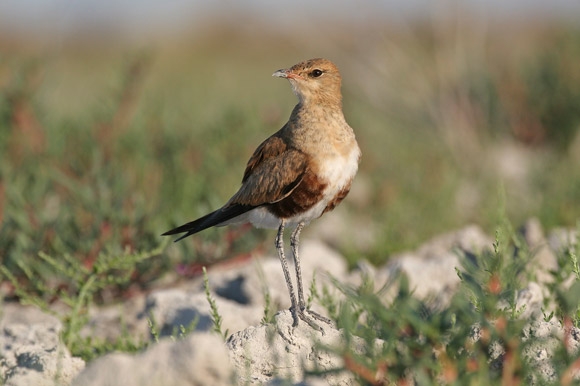
Stiltia isabella
SUBFAMILY
Glareolinae
TAXONOMY
Glareola isabella Vieillot, 1816, Australasia. Monotypic.
OTHER COMMON NAMES
English: Australian courser, long-legged pratincole, isabelline
pratincole; French: Glarйole isabelle; German: Stelzenbrachschwalbe;
Spanish: Canastera Patilarga.
PHYSICAL CHARACTERISTICS
7.5–8.7 in (19–22 cm); about 2.3 oz (about 65 g). Slender and
elegant with long legs and exceptionally long, pointed wings.
Mostly light brown, paler on neck, with dark brown upper
belly and white lower belly. Looks like a long-winged courser
with a pratincole’s head. Bill bright red at base. Rump white.
DISTRIBUTION
Breeds over much of inland and northern Australia. Nonbreeding
birds migrate to extreme northern Australia, New
Guinea, and eastern Indonesia.
HABITAT
Breeds in arid stony country or on short-grass plains, usually
within a mile (1.6 km) or so of water; less often on shorelines
of inland lakes and pans. Non-breeding birds occur on airfields,
grassy plains, and fallow fields.
BEHAVIOR
Usually gregarious, but sometimes solitary. Highly migratory
in flocks that fly high with sweet, penetrating calls. Flight very
light and tern-like. Runs swiftly on ground. Usually silent at
breeding sites.
FEEDING ECOLOGY AND DIET
Catches insect prey by running pursuit on ground or in flight.
On ground uses a wing to stop prey from escaping. May also
feed on non-flying arthropods and some seeds. Drinks often,
especially in hot weather.
REPRODUCTIVE BIOLOGY
Nests solitarily or in small, loose groups on open shorelines
and semi-desert plains, usually within a mile (1.6 km) of water.
Two eggs are laid on bare soil, sometimes with a ring of small
stones, droppings, or dry plant fragments around the site. Both
parents incubate for about 20 days. Chicks are precocial, but
are fed by parents for about a month. Between feedings, chicks
hidden under shrubs or in shallow burrows. Young fly at about
five weeks.
CONSERVATION STATUS
Common to abundant throughout range; not threatened.
SIGNIFICANCE TO HUMANS
May be hunted for food in Indonesia.
Other popular Animals
Photo Gallery of - Australian pratincole
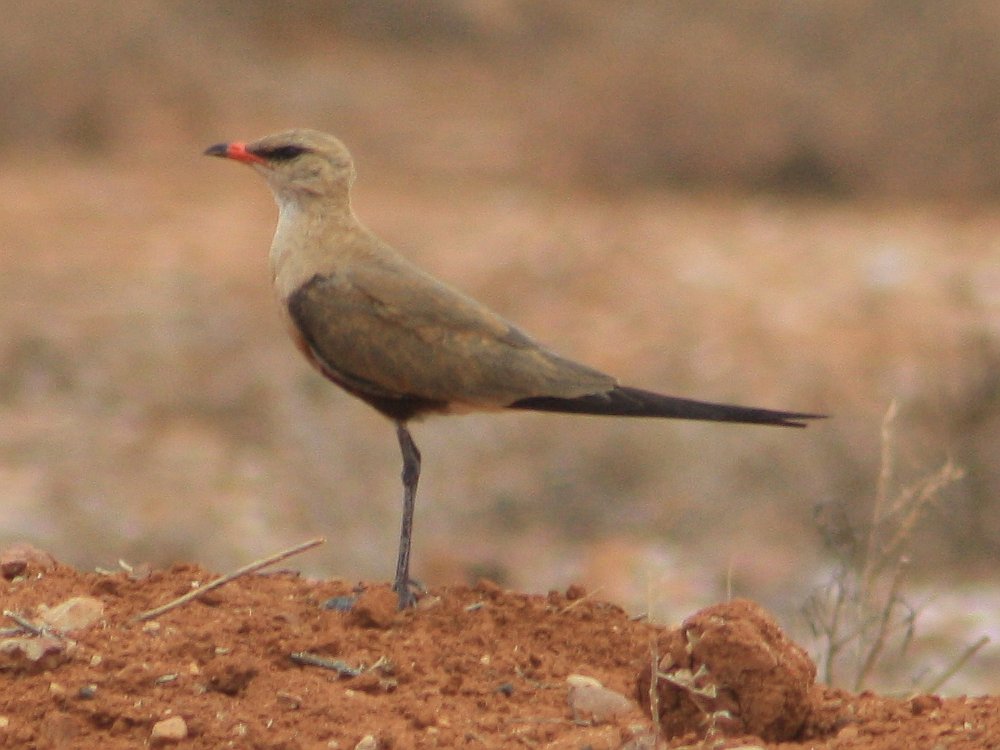
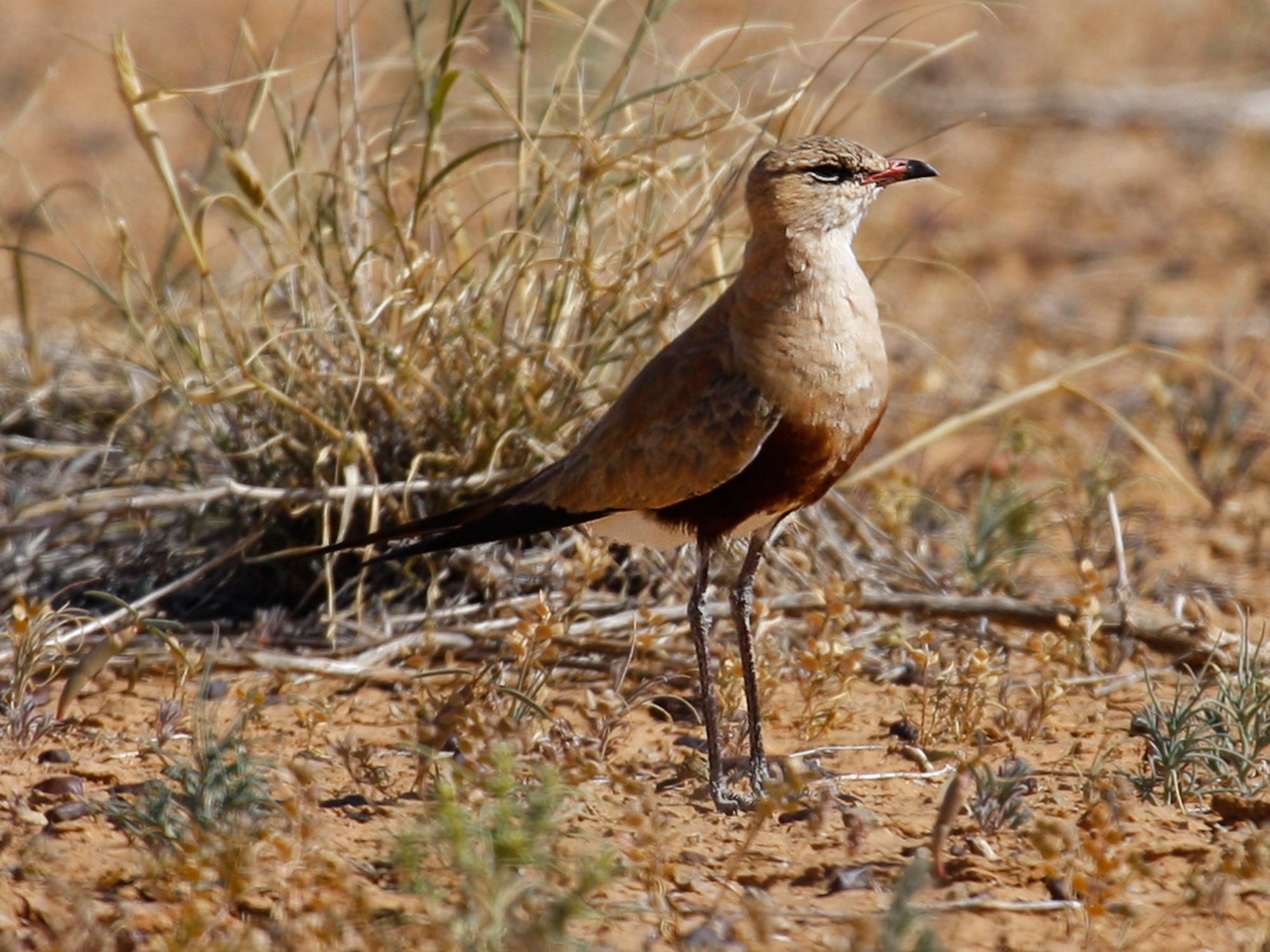
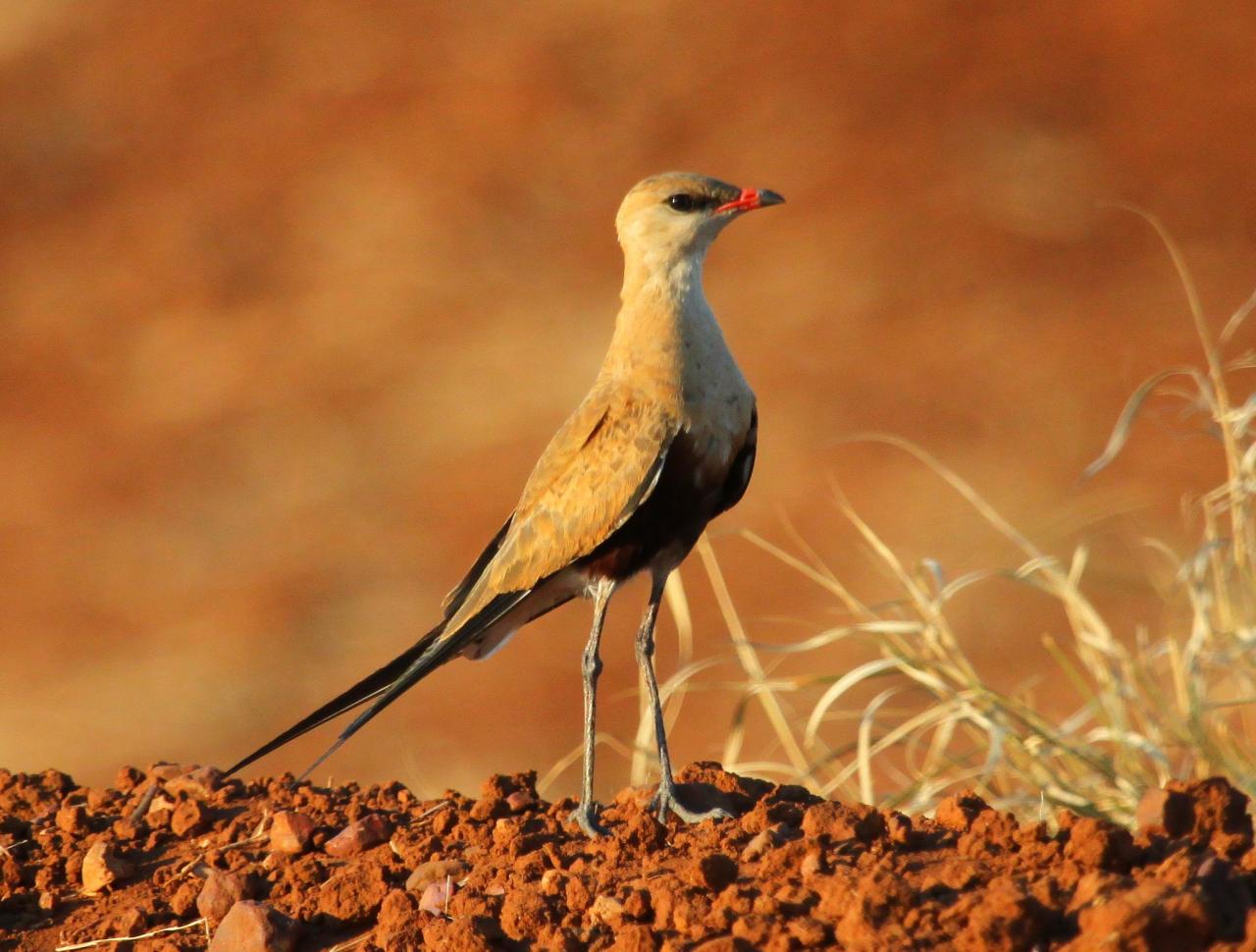
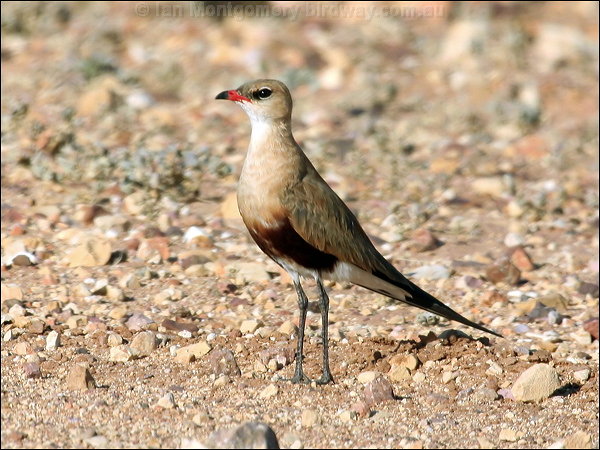
 Animalia Life
Animalia Life